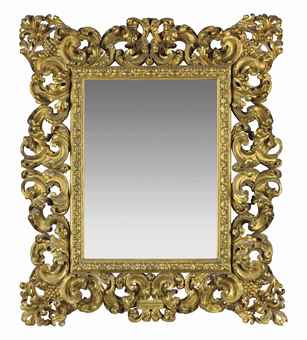The duc d'Orleans moved the court to his Parisian home, the Palais Royal, where he initiated a more informal court style. He hired the architect, Gilles-Marie Oppenord, to supervise the massive interior redecoration, including many pieces of fitted furniture, of the Palais Royal.
Oppenord, the son of a cabinet maker, had lived in the Louvre and then trained in Italy, where he studied architecture and copied Classical monuments. He designed the salon a l'Italienne at the Palais Royal, with panelled walls and doors influenced by the innovative decorative panelling, known as boiserie, which Robert de Cotte had used in the Louvre, during Louis XIV reign. Oppenord's flamboyant, sinuous designs incorporated naturalistic carved flowers, leaf fronds, mythical figures, and mischievous animals, now often used in reproduction furniture, and the carving was deliberately asymmetrical, with decoration flowing freely over the edges of the panels. This extravagant, curvilinear style foreshadowed the blossoming of French Rococo.
Charles Cressent worked as both a sculptor and cabinet maker for the duc d'Orleans, and carried out many of Oppenord's designs. cressent made grand, marble-topped commodes with ormolu mounts, elegant writing desks, and many other pieces in the Rococo style. He also made furniture for Dom Joao V or Portugal and Charles Albert, Elector of Bavaria.
Louis XV Commode
A Louis XV - handmade furniture - Ormolu-mounted kingwood and tulipwood commode.
Mid-18th Century, some mounts probably replaced
The serpentine molded fleur de pêche marble top above a conforming bombé case with two short and a secret third drawer above two long drawers, each drawer front and the sides panelled in tulipwood, the hipped angles mounted with pierced mask, strapwork and acanthus ormolu, the similarly mounted waved apron above splayed feet, inscribed in pencil Elisa Ceruier/Adolphine, bearing the spurious C couronée poinçon.

The later rectangular plate within a pierced scrolling foliate border, the reverse with a printed paper label for
'Thos. Agnews & Sons/London'.

No comments:
Post a Comment